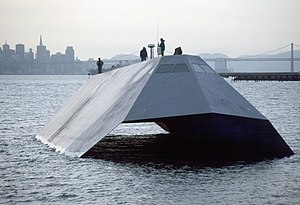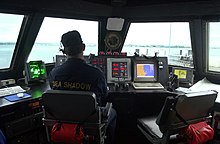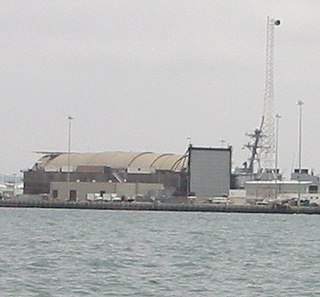The United States Navy, United States Coast Guard, and United States National Oceanic and Atmospheric Administration (NOAA) use a hull classification symbol to identify their ships by type and by individual ship within a type. The system is analogous to the pennant number system that the Royal Navy and other European and Commonwealth navies use.
The Ship-Submarine Recycling Program (SRP) is the process that the United States Navy uses to dispose of decommissioned nuclear vessels. SRP takes place only at the Puget Sound Naval Shipyard (PSNS) in Bremerton, Washington, but the preparations can begin elsewhere.

A naval ship is a military ship used by a navy. Naval ships are differentiated from civilian ships by construction and purpose. Generally, naval ships are damage resilient and armed with weapon systems, though armament on troop transports is light or non-existent.

An arsenal ship is a concept for a floating missile platform intended to have as many as five hundred vertical launch bays for mid-sized missiles, most likely cruise missiles. In current U.S. naval thinking, such a ship would initially be controlled remotely by an Aegis Cruiser, although plans include control by AEW&C aircraft such as the E-2 Hawkeye and E-3 Sentry.
Black project is an informal term used to describe a highly classified, top-secret military or defense project that is not publicly acknowledged by government, military personnel or contractors.

A small waterplane area twin hull, better known by the acronym SWATH, is a catamaran design that minimizes hull cross section area at the sea's surface. Minimizing the ship's volume near the surface area of the sea, where wave energy is located, minimizes a vessel's response to sea state, even in high seas and at high speeds. The bulk of the displacement necessary to keep the ship afloat is located beneath the waves, where it is less affected by wave action. Wave excitation drops exponentially as depth increases, so wave action normally does not affect a submerged submarine at all. Placing the majority of a ship's displacement under the waves is similar in concept to creating a ship that rides atop twin submarines.

A stealth ship is a ship that employs stealth technology construction techniques in an effort to make it harder to detect by one or more of radar, visual, sonar, and infrared methods.
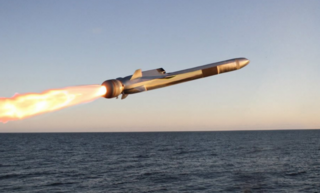
The Naval Strike Missile (NSM) is an anti-ship and land-attack missile developed by the Norwegian company Kongsberg Defence & Aerospace (KDA).

Sea Fighter (FSF-1) is an experimental littoral combat ship in service with the United States Navy. Its hull is of a small-waterplane-area twin-hull (SWATH) design, provides exceptional stability, even on rough seas. The ship can operate in both blue and littoral waters. For power, it can use either its dual gas-turbine engines for speed or its dual diesel engines for efficient cruising. It can be easily reconfigured through the use of interchangeable mission modules. Helicopters can land and launch on its deck. Smaller water craft can be carried and launched from its stern. The vessel is being developed under the program title Littoral Surface Craft-Experimental with a hull type designation Fast Sea Frame. The first vessel has been assigned the hull classification symbol FSF 1 and also has been referred to as the X-Craft. The vessel was designed by British company BMT Nigel Gee Ltd who continue with a role in the development of the vessel.
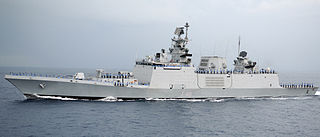
The Shivalik class or Project 17 class is a class of multi-role stealth frigates in service with the Indian Navy. They are the first stealth warships built in India. They were designed to have better stealth features and land-attack capabilities than the preceding Talwar-class frigates. A total of three ships were built between 2000 and 2010, and all three were in commission by 2012.

HSwMS Visby (K31) is the lead ship of the Visby-class corvettes. It was created as a stealth ship, and underwent a decade long testing phase before it entered service with the Swedish Navy.
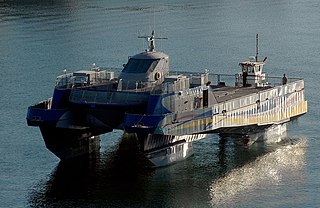
HSV Sea Slice was an experimental vessel, built by Lockheed Martin, for the United States Navy, later used in commercial service.
Sudhir k is an Indian-American business executive.

HSwMS Helsingborg (K32) is a Swedish Visby-class corvette. She was ordered by the Swedish Government in 1995 and is the second ship of the class built by Kockums. She has been in active service with the 31st Corvette Squadron, 3rd Naval Warfare Flotilla since 19 December 2009. It is a stealth missile corvette.
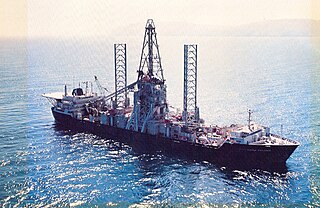
GSF Explorer, formerly USNS Hughes Glomar Explorer (T-AG-193), was a deep-sea drillship platform built for Project Azorian, the secret 1974 effort by the United States Central Intelligence Agency's Special Activities Division to recover the Soviet submarine K-129.

The Tuo Chiang-class corvette is a Taiwanese-designed class of fast and stealthy multi-mission corvettes built for the Republic of China (Taiwan) Navy. It is designed to counter the numerous and increasingly sophisticated People's Liberation Army Navy ships by utilizing hit-and-run tactics, and thus features clean upper structure design with very few extrusions to reduce radar signature, pre-cooled engine exhaust to reduce infrared signature, and a reduced visual signature to reduce chance of detection.
Juliet Marine Systems Ghost is an advanced super-cavitating stealth ship that can reduce hull friction to 1/900th that of conventional watercraft. It was developed to provide superior protection and capabilities for United States military personnel. Ghost was designed, developed, and built by the private American company Juliet Marine Systems.

HSwMS Nyköping(K34) is the fourth ship commissioned of theVisby-class corvette, currently active in the Swedish Navy.
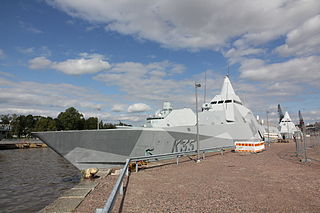
HSwMS Karlstad(K35) was the fifth ship of the Visby-class corvette.
